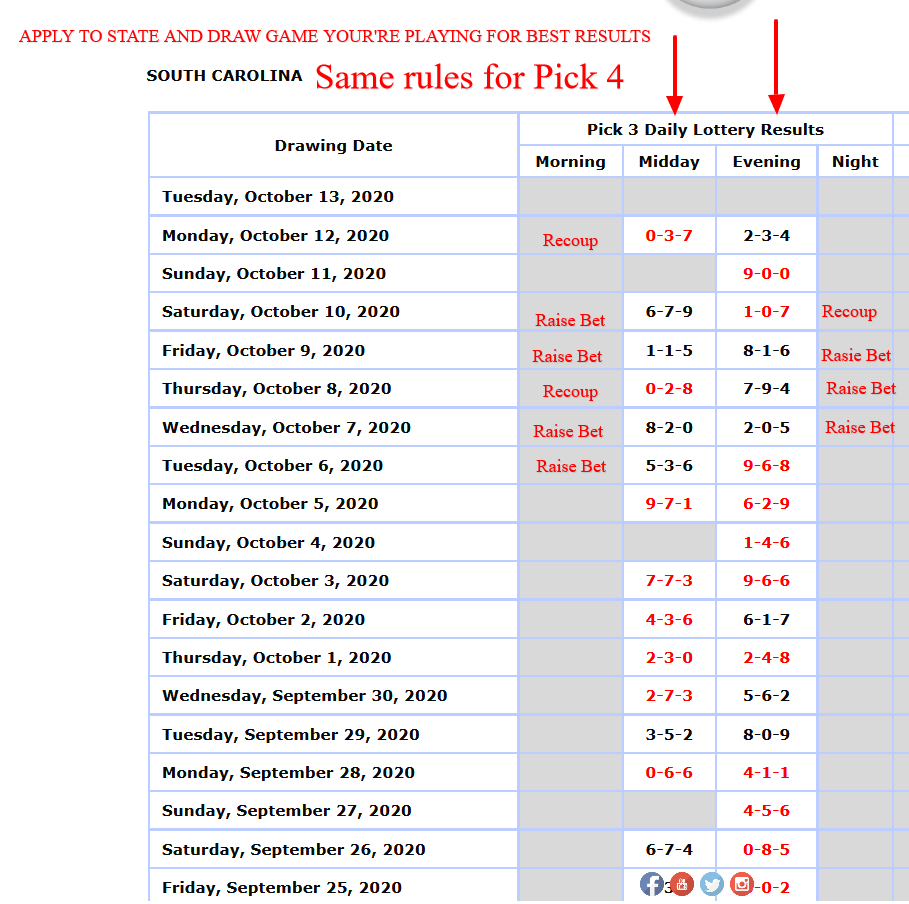CLICK ON THE LINKS BELOW TO LEARN MORE!
The Martingale strategy involves doubling up on losing bets and reducing winning bets by half. It is essentially a strategy that promotes a loss-averse mentality that tries to improve the odds of breaking even but also increases the chances of severe and quick losses. See the example below and watch video!

Autor: Audrey Weston
The Martingale system is one of the oldest and most well-known betting systems in existence. It is also one of the easiest to learn, as there are no complicated calculations involved. The required math is very basic, and there are just a couple of simple steps to follow.
As a negative progression system, the Martingale involves increasing your stakes when you lose. It’s based on the theory that there is a low probability of you losing a large number of bets in a row, and that you will always win one eventually. As sound as this logic might seem, it’s ultimately flawed.
The percentage of gamblers who have tried the Martingale system at one time or another is probably quite high. This is likely to be partly because of its simplicity, and partly because it appears to be a foolproof system at first glance.
Unfortunately, like all other progressive betting systems, this one comes with no guarantee of success. In fact, it is potentially one of the most dangerous systems you can use. You’ll understand why if you read through this page. We’ve covered the system in detail, explaining how it’s used and why it doesn’t work. We’ve also provided information on some alternate variations of this system.
How is the Martingale System Used?
The Martingale system is primarily used at casino games which offer even money bets. The outside bets on the roulette table, such as odd or even, are good examples of where players will try this system. It can also be used on the pass or don’t pass bets at the craps table, and at blackjack and baccarat, and can even be used for even money bets in sports betting.
There is nothing complicated at all about this system. There are basically just two rules to follow.
- RULE 1 – Double your stake every time you lose
- RULE 2 – Stake one base unit after every win
That really is all that the Martingale is. The base unit used can be any amount, although it is a good idea to keep it small for reasons that will become obvious later.
The Martingale System in Practice
As an example, let’s say you wanted to use the Martingale system when playing roulette. You decide that you’re going to use a base staking unit of $5, and bet on odd each time. Your first wager would therefore be $5 on the odd numbers. If an odd number came up, you’d keep the stake at $5. If an even number came up, you’d double your stake to $10. If an even number came up again, you’d double your stake again. So you’d be up to $20.
The principle at play here is that by doubling up, when you do eventually win you will win back all your losses and make a profit of a one base unit. The following example shows this in practice.
Stake $5, lose. Total -$5Double up to $10, lose. Total -$15.Double up to $20, lose, Total -$35.Double up to $40, win. Total +$5.It doesn’t matter how many bets you lose in a row, or what your base unit is. If you follow the system, you will always get a profit of exactly one betting unit when you eventually win a wager.
At this stage you may well be getting excited about the prospect of using this system and becoming rich. This is precisely how many people react when they first hear about the Martingale system, as it seems like the perfect way to make guaranteed profits in the casino. It really isn’t though, as you’re about to find out.
Does the Martingale System Work?
This system can work in the short-term. It can even work for quite for an extended period of time if you avoid any long losing streaks. However, the problems start when you do go on a losing streak. And, realistically, this is bound to happen at you some point.
The biggest drawback of the Martingale system is that it doesn’t take many losing wagers in a row for the required stakes to get very high. Let’s go back to our earlier example, where you started with $5, and see what would happen to your stakes if you lost just six wagers in a row.

After losing six straight wagers, which is perfectly possible, you are now required to stake $320 for the next one. This is 64 times your base stake, and you’d already have lost $315. You might think that you’re sure to win the next one, but there’s no guarantee at all that you would. It’s still an even money chance, regardless of what’s happened before.
If you did lose the next one, you’d now be $635 down. And you’d have to stake $640 on your next wager. At this point, there’s a good chance you’ll have gone through your entire bankroll. Even if you haven’t, another loss or two could prove to be very expensive. You might even hit the table limit, and be unable to make the required stake.
This is where the Martingale system fails. It’s a perfect system if you have an infinite bankroll and a casino with no maximum stake, but neither of these things are possible. If you use this system long enough, you’ll always end up hitting a point where you have no more money or need to stake more than the table maximum. You can cut your losses and start again, of course, but it’s almost certain that you’ll have wiped any profits you may have previously made. You’ll probably have lost a lot more on top too.
You may well be reading this and thinking that a losing streak long enough to cause you problems is unlikely. Let us assure you that it could easily happen. In fact, it is probably far more likely than you think. The odds of winning each bet are always exactly the same, regardless of what has come before.
Just because you have seen an even number come up ten times in a row at the roulette table, the next spin is no more likely to be even than odd on the next spin. Thinking otherwise is known as the gambler’s fallacy, and has been the ruin of many a gambler.
As such, the Martingale system is not one that we would recommend. The risk is just too high when compared to the potential profits. Remember that each winning bet will only ever result in a profit of one base unit. If you are absolutely set on giving it a go, please try it out a few times playing for free at an online casino first. There is every chance that you will see just how possible it is to lose everything.
Variations of the Martingale System
It is not known for sure when or where the Martingale system originated, although it is widely accepted that it is named after John Henry Martingale. He was the owner of a British gambling house in the 18th century, and he promoted the use of the system to his gambling customers. When you consider that he would have of course wanted his customers to lose money, this alone should give you some idea of who the system ultimately favors.
The system was not invented by Martingale though, and it’s believe that the practice of doubling up after a loss had already been around for many years before it got its name. With such a long history, combined with the fact that it doesn’t actually work and can be very costly, you might think that use of the system would have died out by now. It hasn’t though, and people do still use the system.
Furthermore, people have actually developed additional variations of the system. They’re all largely based on the same basic concept though, so they’re all doomed to fail as well. Here’s a few details on some of the more popular variations.
The Mini Martingale
With this variation, you limit the amount of times you double up. The idea is that this will prevent the stakes getting ridiculously high. While it does that, it also means that you are more likely to experience a losing streak where you don’t manage to get a win. You’ll lose your money more slowly with this variation, but you will still lose money unless you get an amazing amount of luck.
The Anti-Martingale
The Anti-Martingale is also known as the Reverse Martingale, and it basically turns the system around. Rather than doubling up after losses, you double up after wins. The idea here is that you can win decent amounts if you go on a winning streak. Of course, you have to stop at some point or you will end up giving back all your profits with one loss. This is a safer option than the original system but still offers no guarantee of winning.
The Grand Martingale
This variation sets out to overcome one of the problems with the original system, that the rewards are too low for the risk involved. Rather than simply doubling up after a loss, you double your stake and also add an additional unit. This way, you’ll win more than a single base unit on any sequence that ends with a win. This doesn’t overcome the main problem though, of the stakes getting too at some point. It makes the problem worse in fact, as you are increasing your stakes a faster rate.
Fibonacci System
Autor: Audrey Weston
The Martingale system is one of the oldest and most well-known betting systems in existence. It is also one of the easiest to learn, as there are no complicated calculations involved. The required math is very basic, and there are just a couple of simple steps to follow.
As a negative progression system, the Martingale involves increasing your stakes when you lose. It’s based on the theory that there is a low probability of you losing a large number of bets in a row, and that you will always win one eventually. As sound as this logic might seem, it’s ultimately flawed.
The percentage of gamblers who have tried the Martingale system at one time or another is probably quite high. This is likely to be partly because of its simplicity, and partly because it appears to be a foolproof system at first glance.
Unfortunately, like all other progressive betting systems, this one comes with no guarantee of success. In fact, it is potentially one of the most dangerous systems you can use. You’ll understand why if you read through this page. We’ve covered the system in detail, explaining how it’s used and why it doesn’t work. We’ve also provided information on some alternate variations of this system.
How is the Martingale System Used?
The Martingale system is primarily used at casino games which offer even money bets. The outside bets on the roulette table, such as odd or even, are good examples of where players will try this system. It can also be used on the pass or don’t pass bets at the craps table, and at blackjack and baccarat, and can even be used for even money bets in sports betting.
There is nothing complicated at all about this system. There are basically just two rules to follow.
- RULE 1 – Double your stake every time you lose
- RULE 2 – Stake one base unit after every win
That really is all that the Martingale is. The base unit used can be any amount, although it is a good idea to keep it small for reasons that will become obvious later.
The Martingale System in Practice
As an example, let’s say you wanted to use the Martingale system when playing roulette. You decide that you’re going to use a base staking unit of $5, and bet on odd each time. Your first wager would therefore be $5 on the odd numbers. If an odd number came up, you’d keep the stake at $5. If an even number came up, you’d double your stake to $10. If an even number came up again, you’d double your stake again. So you’d be up to $20.
The principle at play here is that by doubling up, when you do eventually win you will win back all your losses and make a profit of a one base unit. The following example shows this in practice.
It doesn’t matter how many bets you lose in a row, or what your base unit is. If you follow the system, you will always get a profit of exactly one betting unit when you eventually win a wager.
At this stage you may well be getting excited about the prospect of using this system and becoming rich. This is precisely how many people react when they first hear about the Martingale system, as it seems like the perfect way to make guaranteed profits in the casino. It really isn’t though, as you’re about to find out.
Does the Martingale System Work?
This system can work in the short-term. It can even work for quite for an extended period of time if you avoid any long losing streaks. However, the problems start when you do go on a losing streak. And, realistically, this is bound to happen at you some point.
The biggest drawback of the Martingale system is that it doesn’t take many losing wagers in a row for the required stakes to get very high. Let’s go back to our earlier example, where you started with $5, and see what would happen to your stakes if you lost just six wagers in a row.

After losing six straight wagers, which is perfectly possible, you are now required to stake $320 for the next one. This is 64 times your base stake, and you’d already have lost $315. You might think that you’re sure to win the next one, but there’s no guarantee at all that you would. It’s still an even money chance, regardless of what’s happened before.
If you did lose the next one, you’d now be $635 down. And you’d have to stake $640 on your next wager. At this point, there’s a good chance you’ll have gone through your entire bankroll. Even if you haven’t, another loss or two could prove to be very expensive. You might even hit the table limit, and be unable to make the required stake.
This is where the Martingale system fails. It’s a perfect system if you have an infinite bankroll and a casino with no maximum stake, but neither of these things are possible. If you use this system long enough, you’ll always end up hitting a point where you have no more money or need to stake more than the table maximum. You can cut your losses and start again, of course, but it’s almost certain that you’ll have wiped any profits you may have previously made. You’ll probably have lost a lot more on top too.
You may well be reading this and thinking that a losing streak long enough to cause you problems is unlikely. Let us assure you that it could easily happen. In fact, it is probably far more likely than you think. The odds of winning each bet are always exactly the same, regardless of what has come before.
Just because you have seen an even number come up ten times in a row at the roulette table, the next spin is no more likely to be even than odd on the next spin. Thinking otherwise is known as the gambler’s fallacy, and has been the ruin of many a gambler.
As such, the Martingale system is not one that we would recommend. The risk is just too high when compared to the potential profits. Remember that each winning bet will only ever result in a profit of one base unit. If you are absolutely set on giving it a go, please try it out a few times playing for free at an online casino first. There is every chance that you will see just how possible it is to lose everything.
Variations of the Martingale System
It is not known for sure when or where the Martingale system originated, although it is widely accepted that it is named after John Henry Martingale. He was the owner of a British gambling house in the 18th century, and he promoted the use of the system to his gambling customers. When you consider that he would have of course wanted his customers to lose money, this alone should give you some idea of who the system ultimately favors.
The system was not invented by Martingale though, and it’s believe that the practice of doubling up after a loss had already been around for many years before it got its name. With such a long history, combined with the fact that it doesn’t actually work and can be very costly, you might think that use of the system would have died out by now. It hasn’t though, and people do still use the system.
Furthermore, people have actually developed additional variations of the system. They’re all largely based on the same basic concept though, so they’re all doomed to fail as well. Here’s a few details on some of the more popular variations.
The Mini Martingale
With this variation, you limit the amount of times you double up. The idea is that this will prevent the stakes getting ridiculously high. While it does that, it also means that you are more likely to experience a losing streak where you don’t manage to get a win. You’ll lose your money more slowly with this variation, but you will still lose money unless you get an amazing amount of luck.
The Anti-Martingale
The Anti-Martingale is also known as the Reverse Martingale, and it basically turns the system around. Rather than doubling up after losses, you double up after wins. The idea here is that you can win decent amounts if you go on a winning streak. Of course, you have to stop at some point or you will end up giving back all your profits with one loss. This is a safer option than the original system but still offers no guarantee of winning.
The Grand Martingale
This variation sets out to overcome one of the problems with the original system, that the rewards are too low for the risk involved. Rather than simply doubling up after a loss, you double your stake and also add an additional unit. This way, you’ll win more than a single base unit on any sequence that ends with a win. This doesn’t overcome the main problem though, of the stakes getting too at some point. It makes the problem worse in fact, as you are increasing your stakes a faster rate.
Progressive Betting Systems
- The concept of such systems is really quite simple and they are easy to use.
- 2Many people believe that these systems will guarantee them endless gambling winnings.
The Basic Concept
| POSITIVE PROGRESSION | NEGATIVE PROGRESSION |
| Increase stakes when you win | Increase stakes when you lose |
| Decrease stakes when you lose | Decrease stakes when you win |
Positive Progression
Example – The Paroli System
- Wheel lands on black. Increase stake by $10 for next wager.
- Wheel lands on red. Stake $10 for next wager.
- Wheel lands on zero. Stake $10 for next wager.
- Spin 1. Stake $10. Win. Total +$10.
- Spin 2. Stake $20. Win. Total +$30.
- Spin 3. Stake $30. Win. Total +$60.
- Spin 4. Stake $40. Win. Total +$100.
- Spin 5. Stake $50. Win. Total +$150.
- Spin 1. Stake $10. Win. Total + $10.
- Spin 2. Stake $20. Lose. Total – $10.
- Spin 3. Stake $10. Win. Total $0.
- Spin 4. Stake $20. Lose. Total – $20.
- Spin 5. Stake $10. Win. Total – $10.
- Spin 5. Stake $20. Lose. Total – $30.




















